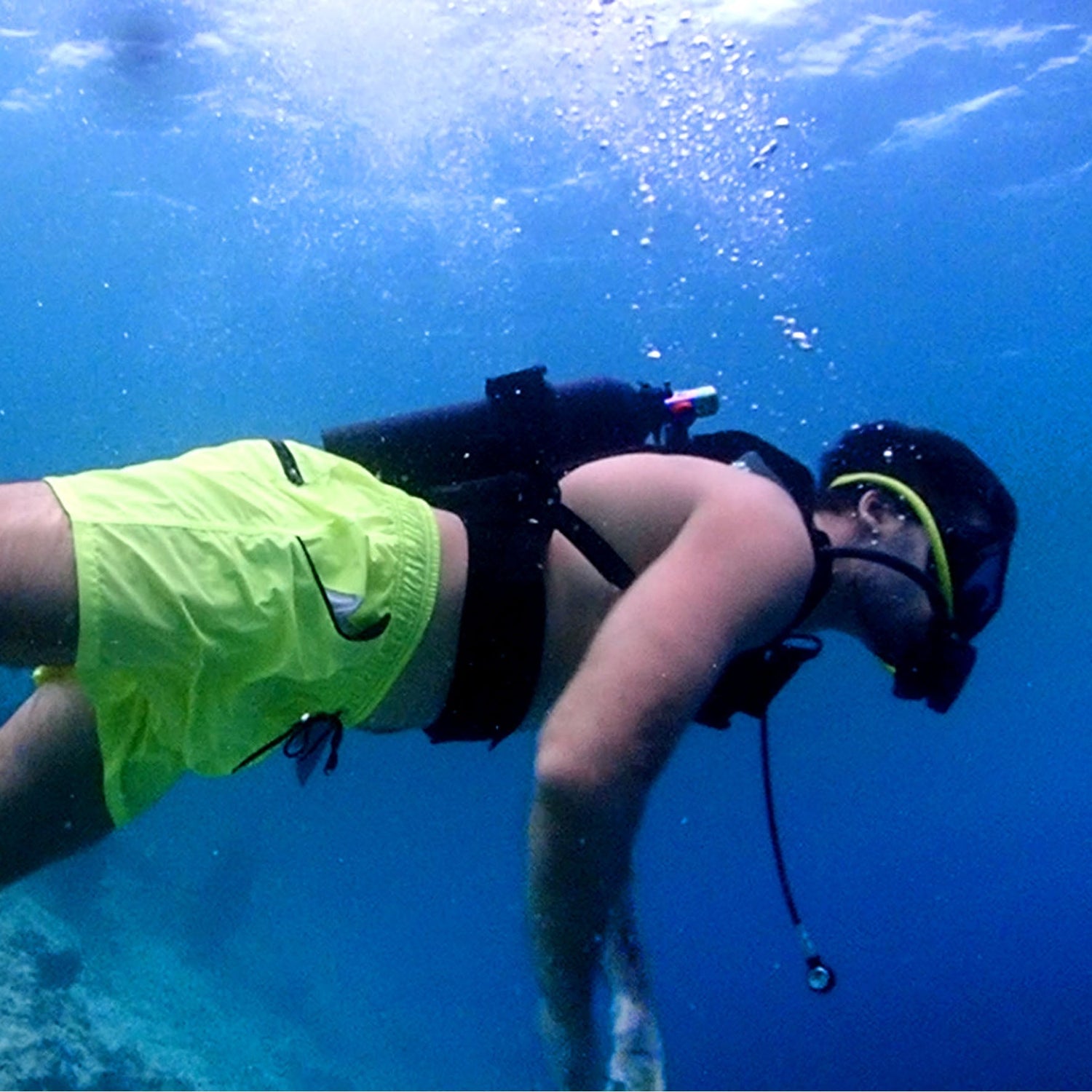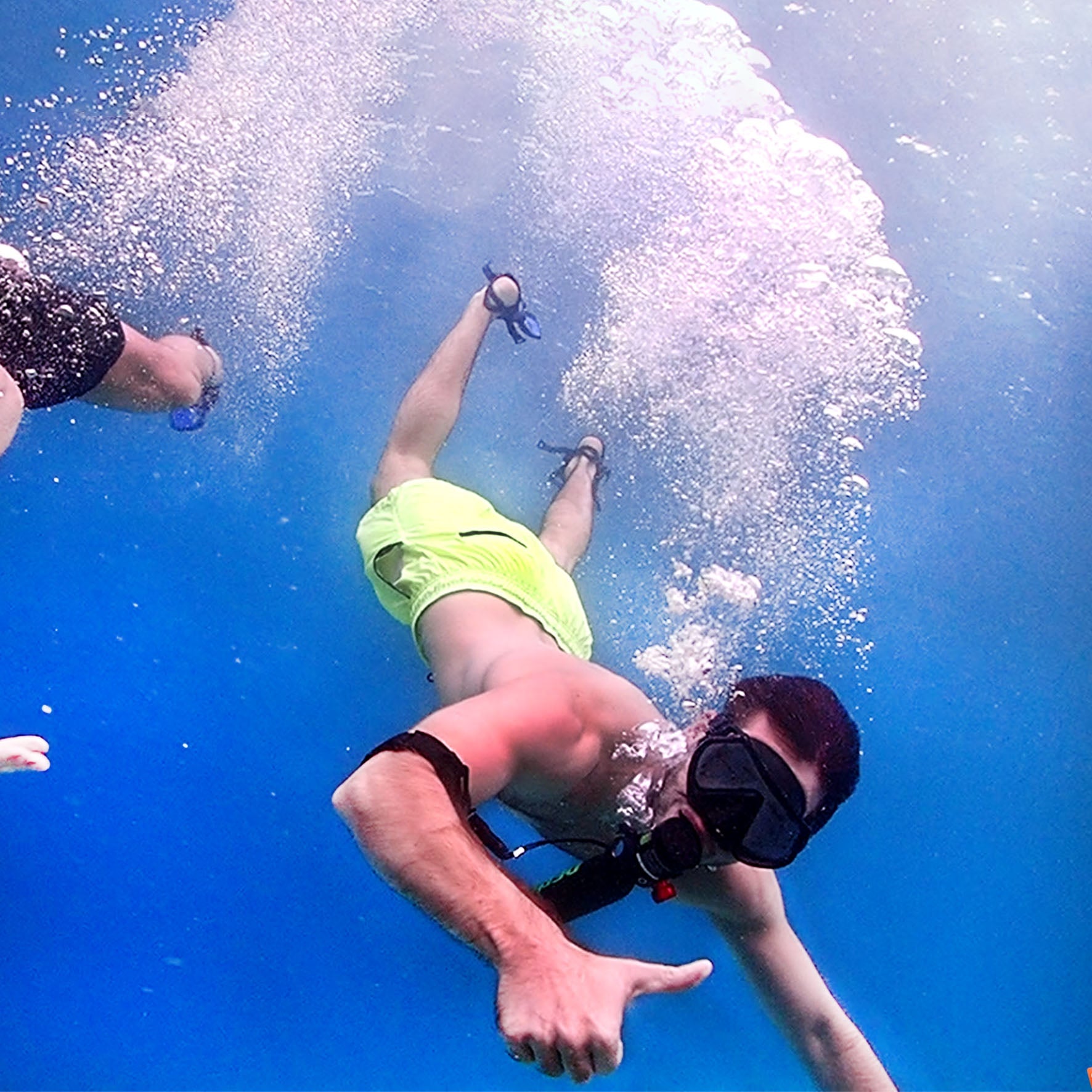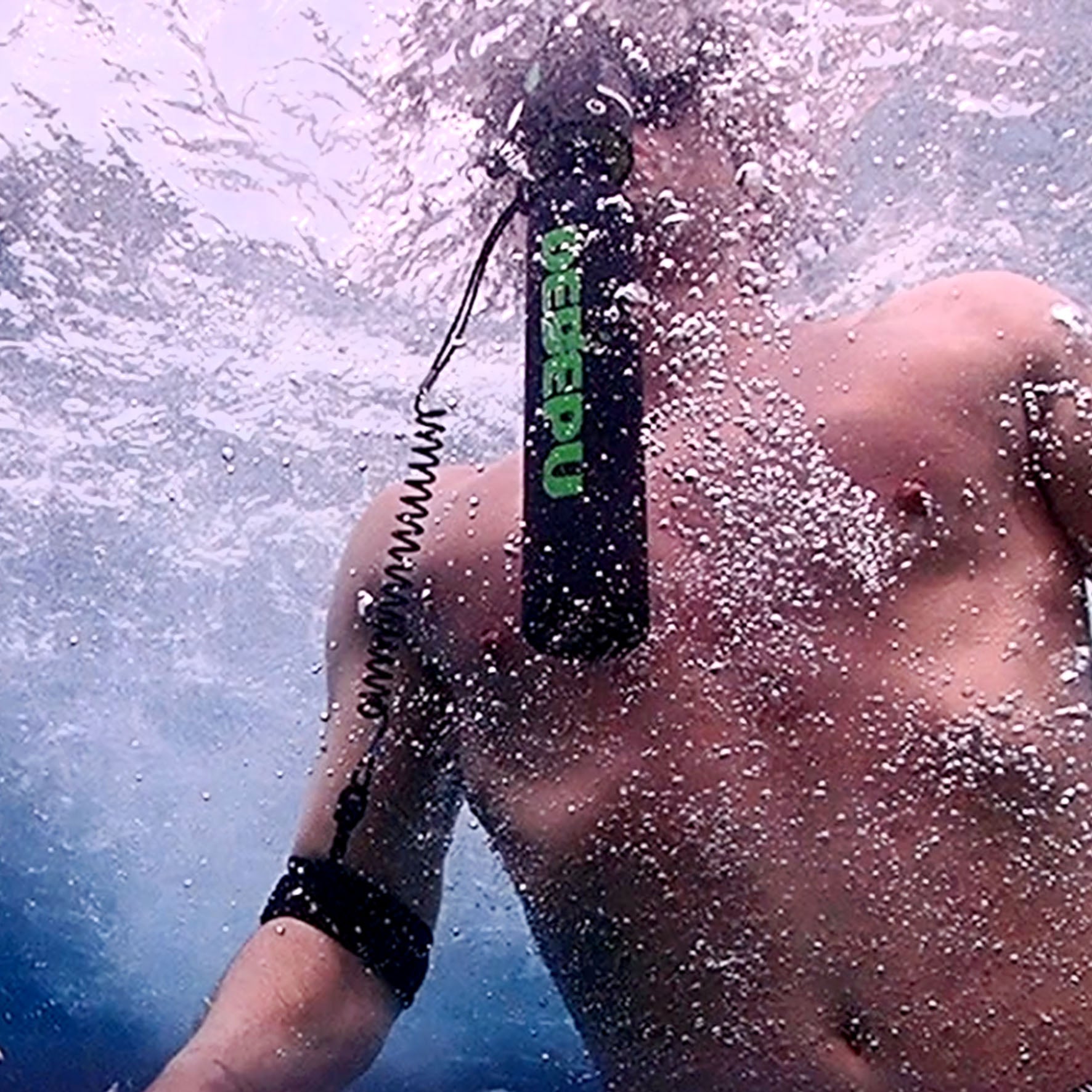Snorkeling lets you explore underwater worlds, but 75% of beginners struggle with gear issues in their first try. A well-fitted mask should seal for 3-5 seconds when pressed to your face, while dry snorkels reduce water intake by 90% compared to basic models. Proper breathing—3-second inhales, 4-second exhales—boosts endurance by 40%, and rinsing gear after each use extends its life by 2-3 years.
Picking the Right Mask and Snorkel
About 40% of first-time snorkelers report leaks or discomfort due to the wrong size or fit. The average snorkel mask lasts 2-5 years with proper care, but choosing the right one depends on face shape, strap tension, and lens type. A well-sealed mask should stick to your face for 3-5 seconds when pressed without the strap, indicating a proper seal. Snorkels come in dry, semi-dry, and traditional styles, with dry snorkels reducing water intake by 90% compared to open-top designs. Prices range from 20 for basic sets to 150+ for premium anti-fog, tempered glass masks.
1. Mask Fit & Seal Test
Face shape matters: Masks come in small (for kids/juniors), medium (most adults), and large (wider faces).
Test the seal: Press the mask to your face (no strap) and inhale slightly. If it stays for 3+ seconds, the fit is good.
Strap tension: Over-tightening causes leaks—adjust so it’s snug but not painful. 60-70% of leaks come from incorrect strap pressure.
2. Lens Type & Visibility
Single vs. dual lenses: Single lenses offer 180° visibility, while dual lenses reduce fogging by 30% due to separate air pockets.
Tempered glass vs. plastic: Tempered glass resists scratches 5x longer and is standard in masks $50+.
3. Snorkel Choice (Dry vs. Semi-Dry vs. Traditional)
Dry snorkels (with a float valve) block 95% of water—best for beginners.
Semi-dry snorkels reduce splash intake by 70% but require occasional clearing.
Traditional snorkels are cheapest (10-20) but require frequent clearing.
4. Budget vs. Performance
Under $30: Basic masks with PVC skirts (lasts 1-2 years).
50-100: Silicone-skirt masks with tempered glass (lasts 3-5 years).
$100+: Premium masks with low-volume design (easier to clear, better for diving).
5. Extra Features Worth Considering
Purge valves: Help clear water 50% faster but add 10-20 to cost.
Anti-fog coating: Lasts 6-12 months before needing reapplication.
Color options: Dark tints reduce glare by 20% in bright conditions.

Preparing Your Gear Before Swimming
About 65% of snorkeling gear issues—like leaks, fogging, or discomfort—happen because people skip proper prep. A mask that fits well on land can still leak if the straps aren’t adjusted right, and a dry snorkel won’t work if its valve is clogged with sand. Studies show that rinsing gear in fresh water extends its lifespan by 30-50%, while improper storage (like leaving it in direct sunlight) can degrade silicone skirts in just 6 months. A quick 2-minute pre-swim check can prevent 80% of common problems, saving you time and frustration in the water.
1. Rinse & Remove Residues
Salt, sand, and sunscreen degrade silicone seals 3x faster if not rinsed off.
Use lukewarm water (30-40°C / 86-104°F)—hot water warps mask skirts.
Frequency: Rinse after every use to prevent calcium buildup, which hardens in 48 hours.
2. Adjust Straps for a Secure Fit
Mask straps should be tight enough to seal but not dig in—1-2 finger widths of slack is ideal.
Snorkel keeper position: Place it 2-3 inches (5-7 cm) above the temple to avoid pulling hair.
Test in shallow water: 90% of leaks are detectable in the first 30 seconds of submersion.
3. Defog the Mask Properly
Commercial defog gel lasts 2-3x longer than spit but costs 5-15 per bottle.
DIY method (toothpaste/baby shampoo): Rub, rinse, and it works for 1-2 hours.
Avoid touching the lens: Finger oils reduce clarity by 40% after 3-4 touches.
4. Check the Snorkel Valve (If Dry/Semi-Dry)
Dry snorkel float valves fail if sand or debris blocks them—blow hard once to test before swimming.
Semi-dry splash guards lose 20-30% efficiency if bent or misaligned.
Traditional snorkels: Ensure the mouthpiece isn’t cracked—replace every 1-2 years.
5. Final Fit Test (Land + Water)
Land test: Inhale through the snorkel with the mask sealed—no air leaks = good fit.
Water test: Submerge face for 15 seconds—if water seeps in, readjust straps.
Emergency clearing: Practice blowing out 1 liter of water in <3 seconds to prep for accidents.
Breathing Comfortably Through the Snorkel
About 50% of new snorkelers struggle with breathing at first, often taking shallow, rapid breaths (20-30 per minute) instead of slow, deep ones (8-12 per minute). A standard snorkel tube adds dead air space (120-150ml), forcing your lungs to work 10-15% harder than normal breathing. Dry snorkels reduce water intake by 90%, but improper breathing can still cause CO₂ buildup, leading to dizziness in just 5-7 minutes. Studies show that controlled breathing (inhaling for 3 seconds, exhaling for 4 seconds) improves endurance by 40% and reduces fatigue.
1. Optimal Mouthpiece Setup
Size considerations:
Standard adult mouthpiece measures 4-5cm wide
Children's versions typically 3-3.5cm
Material impact:
Medical-grade silicone reduces jaw fatigue by 35% compared to PVC
Average cost difference: $8-12
2. Breathing Technique Breakdown
Recommended pattern:
3-second inhalation
4-second exhalation
1-second pause
Performance benefits:
Increases underwater time by 40%
Reduces oxygen consumption by 18-22%
3. Equipment Specifications Matter
Tube dimensions:
Ideal diameter: 20mm (±2mm)
Length range: 30-38cm
Flow rate data:
Standard snorkel allows 25-30 liters/minute airflow
High-performance models reach 35-40 liters/minute
4. Real-World Usage Statistics
Average user experience:
First-time snorkelers adapt in 15-20 minutes
68% report initial discomfort subsiding within first 8 minutes
Common issues:
42% experience jaw fatigue within 30 minutes
28% report dry mouth after 45 minutes
5. Maintenance for Optimal Performance
Cleaning schedule:
Rinse after each use (100% effectiveness)
Deep clean every 10 uses
Replacement timeline:
Mouthpiece: Replace every 12-18 months
Full snorkel unit: 2-3 year lifespan
Clearing Water from Your Snorkel
Even with a dry snorkel, water inevitably gets inside—82% of snorkelers deal with this at least once per session. The average snorkel tube holds 100-150ml of water when full, and clearing it improperly can waste 15-30 seconds of precious breathing time. Studies show that blast clearing (a sharp exhale) removes 95% of water in under 2 seconds, while the displacement method (tilting head back) works at 80% efficiency but takes 5-8 seconds. Purge valves on mid-range snorkels (30-50 models) can reduce clearing effort by 40%, but they require 1-2 practice attempts to master.
1. The Blast Clearing Method (Most Effective)
How it works:
Take a deep breath (inhale 3-4 seconds)
Seal lips tightly around mouthpiece
Exhale sharply (0.5-1 second burst) at 80-90% lung capacity
Why it’s best:
Clears 100ml of water in 1.5 seconds
Works even in choppy waves
Requires no extra gear
Common mistakes:
Weak exhale (<50% lung power) leaves 30-50ml residual water
Breaking seal too soon reduces efficiency by 20%
2. The Displacement Method (For Beginners)
How it works:
Tilt head back 45-60 degrees
Let water drain naturally (gravity does 70% of the work)
Gently exhale remaining 10-20ml
When to use it:
If you’re low on breath (only 50-60% lung power available)
In calm water (waves reduce effectiveness by 35%)
Limitations:
Takes 2-3x longer than blast clearing
Leaves 15-25ml water in tube
3. Purge Valve Snorkels (Easiest but Costlier)
How they work:
One-way valve at bottom releases water with minimal effort
Requires just 30-40% exhale force vs. standard snorkels
Performance stats:
Clears 90% of water in 1 second
Reduces fatigue over 1-hour sessions by 25%
Adds 10-20 to snorkel price
Maintenance tips:
Rinse valve after each use (sand clogs it in 3-4 exposures)
Replace every 2 years (valve wear reduces efficiency by 15%/year)
4. Preventing Water Entry (Pro Tips)
Splash reduction:
Semi-dry snorkels cut wave intake by 60-70%
Positioning snorkel parallel to water surface reduces entry
Dive recovery:
After surfacing, exhale before inhaling (prevents 80% of accidental gulps)
Check snorkel angle (>30 degrees downward increases leak risk)
5. Practice Drills for Reliability
Shallow water training:
Fill snorkel 50% full (75ml) and practice clearing
Goal: <3 seconds to fully clear
Advanced simulation:
Have a partner splash 200ml water into tube
Test recovery under realistic conditions

Maintaining and Storing Your Snorkel Gear
Proper care can double your gear's lifespan—a 100 mask lasts 5+ years instead of 2-3 with poor maintenance. Studies show saltwater accelerates silicone degradation by 40% if not rinsed off within 8 hours. Sunlight is worse: just 30 days of UV exposure weakens mask skirts by 50%. Storing gear wet leads to mold growth in 72 hours (present in 65% of poorly maintained snorkels). The good news? Spending 3 minutes post-dive on care prevents 80% of common issues, saving you 50-$100/year on replacement costs.
1. Rinsing: The 90-Second Salvage Operation
What to rinse:
Mask/Snorkel: 30 seconds under 25-30°C (77-86°F) freshwater
Fins/Straps: 60 seconds focusing on buckles and crevices
Why it matters:
Removes 95% of salt/sand that causes wear
Prevents calcium buildup (hardens in 48 hours, scratches lenses)
Pro tip:
Use a 5:1 water/vinegar mix monthly to dissolve stubborn deposits
2. Drying: Where Most People Go Wrong
Critical steps:
Shake off 90% of water (takes 10 seconds)
Air-dry in shade for 2 hours (direct sun cuts silicone life by 25%/year)
Wipe lenses with microfiber cloth (reduces scratches by 60%)
Storage moisture targets:
0% visible water droplets before packing
<60% humidity in storage area
3. Storage: The Longevity Game-Changer
Ideal conditions:
Temperature: 15-25°C (59-77°F)
Container: Ventilated mesh bag (10-20) beats sealed bags by 3x gear life
What to avoid:
Stacking weight on masks (>2kg pressure warps frames)
Hanging by straps (stretches them 15% per season)
4. Replacement Timelines (Save Money by Timing It Right)
| Gear Piece | Avg. Lifespan | Early Failure Signs |
|---|---|---|
| Mask Skirt | 3-5 years | Cracks >1mm long |
| Snorkel Valve | 2 years | Takes >3 sec to close |
| Fin Straps | 1.5 years | Stretches >5cm when pulled |
Cost-saving hack:
Replace just the skirt (25) instead of whole mask (80)
5. Pre-Season Checkup (The 5-Minute Inspection)
Annual maintenance ritual:
Flex test silicone for stiffness (should rebound in <1 second)
Leak test mask (should hold seal for 10+ seconds)
Valve check (dry snorkel must seal in 0.5 seconds)
Budget impact:
Catches 90% of issues before they ruin trips
Saves $150+ in emergency gear purchases
Tip: Store gear fully dry with silica gel packs ($5 for 10 packs) to prevent off-season mold. Your future self will thank you when that mask still fits perfectly in Year 4.




Hinterlasse einen Kommentar
Alle Kommentare werden vor der Veröffentlichung geprüft.
Diese Website ist durch hCaptcha geschützt und es gelten die allgemeinen Geschäftsbedingungen und Datenschutzbestimmungen von hCaptcha.